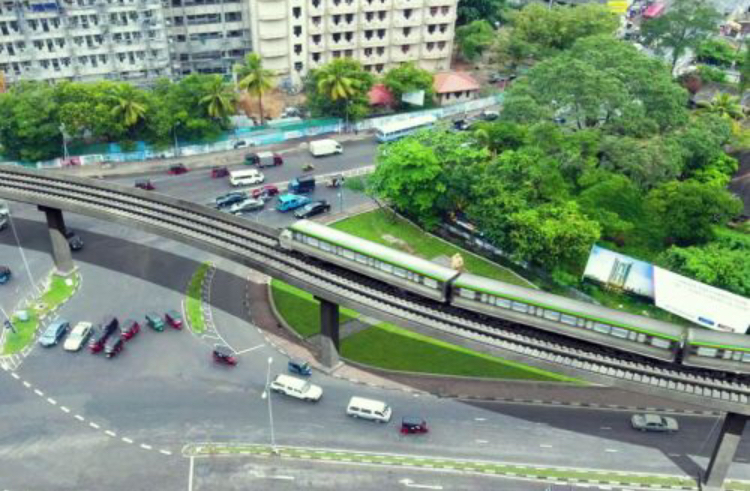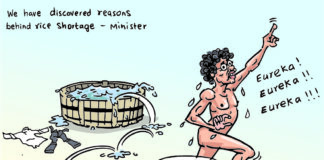Sri Lanka’s Ministry of Urban Development has said that it has called for a report from an expert committee for the revival of the US$ 2.2 billion Colombo Light Rail Transit (LRT) Project that was abandoned during the Gotabaya Rajapaksa Presidency.
In 2019, the Japan International Cooperation Agency (JAICA) agreed to grant a soft loan of US$ 1.8 billion with an annual interest of 0.1% to be repaid over 40 years with a 12-year grace period.
The LRT project was to be a solution for traffic congestion in Colombo and its suburbs especially during peak hours. Phase I of the LRT project was to cover 16.7 km on an elevated track from Malabe to Colombo Fort with 16 stations covering the distance in 32 minutes.
But influenced by a leading transport economist, the Gotabaya regime on September 21 2020, ordered the immediate termination of the project without giving Japan advance notice or consulting it. In the then government’s view US$ 2.2 billion was too costly for the “limited use”.
But apart from putting off Japan, a time-tested friend of Sri Lanka’s, the cancellation of the project had cost the country Rs. 5.978 billion, according to the National Audit Office. The cancellation also resulted in a waste of Rs. 10.6 billion because multiple parties had spent this amount already.
The Urban Development Authority (UDA) will now call for expressions of interest (EOIs) from interested international firms or joint venture companies to build the necessary infrastructure and implement the project subject to the Cabinet of Ministers’ approval.
But the million-dollar question is: Will Japan re-enter the project swallowing the earlier insult? The Japanese Ambassador to Sri Lanka Hideaki Mizukoshi was quoted in the media in March as saying: “No decision has yet been made. But it all depends on how the reforms of the Sri Lankan government go and whether Sri Lanka can regain the trust of the Japanese government and the business community.”
Speaking at a breakfast forum organized by the Ceylon Motor Traders Association in Colombo, he said: “When those conditions are met, I think it will be considered.”
20% Return on Investment
Dimantha de Silva, Senior Lecturer in the Transportation Engineering Division of Moratuwa University, Silva told this correspondent after the cancellation that the project was worthwhile both from the point of view of present and future transport needs of Colombo and the return on investment.
The project would have assured a 20% return on investment in addition to providing a sustainable solution to traffic congestion in a corridor that has the highest vehicle growth and biggest traffic jams at the moment, de Silva said.
“The elevated track would have taken a good chunk of the traffic during peak hours and would have had Rs 38 billion of economic benefit per year in terms of travel time savings and fuel cost savings,” he added.
Going at 80 km per hour, the train would have carried 800 passengers per train when first operated in 2025 and 1200 passengers per train when operating in 2035, de Silva said.
The first instalment of the repayment was to be given in 2030 after six years of operation and obtaining economic benefits. The last instalment was expected to be given in 2058. One of the conditions was that 30% of the products used should be of Japanese origin.
De Silva said that if the cost per kilometre appeared to be high, it was because the distance was short (just 16.7 km), adding that the per km cost usually optimizes for around 30 km distance since fixed cost components such as system costs for electrical and mechanical systems, communication and signal systems together with rolling stock and maintenance yard will be fixed for a length of around 30 km.
However, when the line is extended from Malabe to Kaduwela and to Kottawa (via Athurugiriya), as per the Master Plan, making it around 30kms, the per kilometre cost will come down to around US$ 50-55 million per km based on the engineering estimates completed recently, de Silva said.
As for the argument that the railways are not being used by Sri Lankans, his counter was that people use the railway heavily when railways are available.
According to the feasibility study, the estimated passenger trip demand for the Malabe-Fort line in 2025 is 363,000 with over 14,300 passengers per hour being transported in peak hour direction. The estimated passenger trip demand in 2035 is 498,000 with 19,800 passengers per hour in peak direction, where travel time from Malabe to Fort will be 32 minutes and from Fort to Sethsiripaya will be 18 minutes.
While the space under the elevated track can be used for commercial purposes, the elevated track obviates the need for level crossings, which if closed frequently will disrupt the smooth flow of road traffic, de Silva said.
With thousands taking the LRT, congestion on the roads will be reduced and vehicles can move faster, cutting down on travel time and fuel use, he added.
The Urban Development Authority (UDA) will now call for expressions of interest (EOIs) from interested international firms or joint venture companies to build the necessary infrastructure and implement the project subject to the Cabinet of Ministers’ approval.
Million Dollar Question
But the million-dollar question is: Will Japan re-enter the project swallowing the earlier insult? The Japanese Ambassador to Sri Lanka Hideaki Mizukoshi was quoted in the media in March as saying: “No decision has yet been made. But it all depends on how the reforms of the Sri Lankan government go and whether Sri Lanka can regain the trust from the Japanese government and the business community.”
Speaking at a breakfast forum organized by the Ceylon Motor Traders Association in Colombo, he said: “When those conditions are met, I think it will be considered.”
Systemic Challenges to FDI
The US State Department’s report on the foreign investment climate in Sri Lanka updated for 2021, says: “Sri Lanka is a challenging place to do business, with high transaction costs aggravated by an unpredictable economic policy environment, inefficient delivery of government services, and opaque government procurement practices. Investors noted concerns over the potential for contract repudiation, cronyism, and de facto or de jure expropriation.”
“Public sector corruption is a significant challenge for U.S. firms operating in Sri Lanka and a constraint on foreign investment.”
“While the country generally has adequate laws and regulations to combat corruption, enforcement is weak, inconsistent, and selective. US stakeholders and potential investors expressed particular concern about corruption in large infrastructure projects and in government procurement.”
“The government pledged to address these issues, but the COVID-19 response remains its primary concern. Historically, the main political parties do not pursue corruption cases against each other after gaining or losing political positions.”





